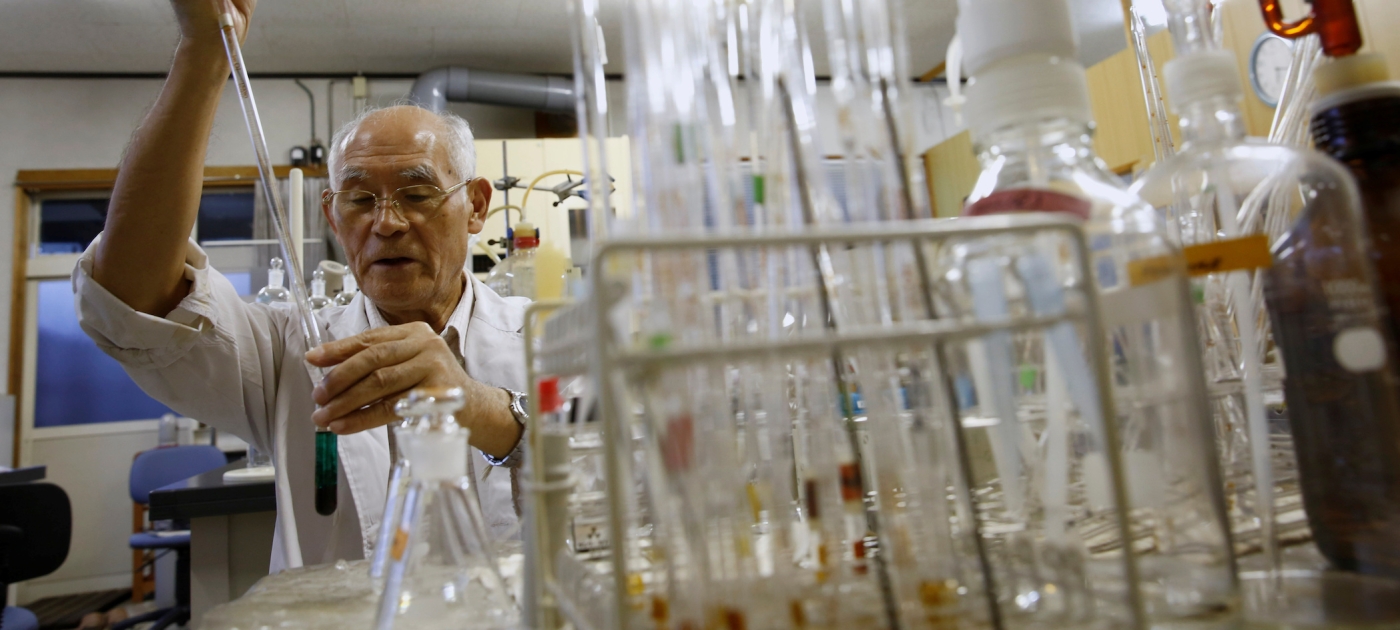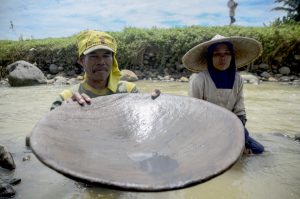Why mercury is still a threat to human and planetary health

Everyone is exposed to mercury at some level – whether through the food we eat, the air we breathe or the cosmetics that we use. Inhalation or ingestion of large amounts of mercury, however, can lead to serious neurological health implications. Symptoms can include tremors, insomnia, memory loss, headaches, muscle weakness, and—in extreme cases—death.
According to the World Health Organization (WHO), two groups are at particularly risk: unborn babies, whose mothers have high levels of mercury in their blood, and those who are regularly exposed to elevated levels of mercury, such as subsistence fishermen.
To tackle this global challenge, representatives from governments, United Nations bodies, academia and civil society gathered at the resumed fourth meeting of the Conference of the Parties to the Minamata Convention on Mercury.
At the conference, which ran from 21 to 25 March in Bali, Indonesia, representatives discussed key-sensitive issues such as the framework to evaluate the effectiveness of the Convention, the list of phase-out mercury-containing products, and how to address the health impacts of mercury.
The Convention is named after the bay in Japan where, in the mid-20th century, mercury-tainted industrial wastewater poisoned thousands of people, leading to severe health issues that became known as the “Minamata disease.” Since it entered into force in 2017, the Convention aims to control mercury supply and trade, and reduce the use, emission and release of mercury, raise public awareness, and build the necessary institutional capacity. It entered into force in 2017, and as of today, it has 137 parties.
Whilst levels of mercury can be measured in samples of blood, hair, or urine; here are a few ways humans are exposed to the element daily:
Fish consumption

A researcher measures seafood for the presence of metals such as mercury and lead. Photo: Shutterstock
Seafood is the main source of protein for over three billion people around the world. Because mercury “bio-accumulates” in the food chain, larger fish such as shark, swordfish, tuna and marlin tend to be especially high in mercury. People who consume very high amounts of seafood can be exposed to high levels of methylmercury, an organic compound that accumulates in the bodies of the fish.
Mercury poisoning from consuming marine animals has been seen among indigenous groups in many parts of the world, especially in the Arctic. Per capita seafood consumption in those communities can be up to 15 times higher than in non-indigenous groups, according to the United Nations Environment Programme (UNEP) 2018 Global Mercury Assessment.
Cosmetics

Cosmetics are filled with potentially hazardous materials, including microplastics and mercury. Photo: Unsplash/Elizabeth Favara
Mercury can also be found in beauty products, particularly skin-lightening creams, but also eye make-up and eye-cleansing products. While many countries have imposed laws banning mercury from cosmetics, others have yet to do so, and mercury-tainted products have been found on major online retailers. Consumers looking to avoid the toxic element should buy products from reliable vendors and ensure that their products are properly sealed and labeled. The World Health Organization has more information on the topic.
Small-scale mining

Small-scale gold miners on the Cisero River, West Java, Indonesia. Photo: Reuters/Dika Fadilah
Artisanal and small-scale gold miners regularly use mercury to help them separate gold from other material, and most of that mercury ends up in the environment. In 2015, according to the Global Mercury Assessment, artisanal and small-scale mining emitted some 800 tonnes of mercury into the air, roughly 38 per cent of the global total, and also released some 1,200 tonnes of mercury to land and water. Mercury poisoning also represents a serious and direct health threat to the 12 million to 15 million people who work in the sector around the world. Reducing mercury emissions and releases from mining is a key goal of the Minamata Convention, which requires countries with small-scale gold mining to produce national action plans to reduce or eliminate mercury from the sector.
Coal-burning

Steam rises from the cooling towers of a coal power plant in Niederaussem, Germany. Photo: Reuters/Wolfgang Rattay
Not only does coal burning contribute to air pollution and the climate crisis, it is also a major source of anthropogenic mercury emissions. The 2018 Global Mercury Assessment found that coal burning and other forms of fossil fuel and biomass combustion were responsible for about 24 per cent of global mercury emissions. Although coal contains only small concentrations of mercury, people tend to burn it in large volumes. As the global economy grows, so too does coal burning for power generation. The good news is that up to 95 per cent of mercury releases from power plants can be reduced by improving coal and plant performance, and improving control systems for other pollutants.
Dental amalgam
For more than a hundred years, mercury has been one of the primary ingredients in dental amalgam, the mixture that dentists use to fill the cavities in their patients’ teeth. And while amalgam probably poses only a minimal threat to the health of those who walk around with it in their mouths, the use of mercury in amalgam also contributes to a gradual build-up of the toxic element in our environment. To tackle this challenge, the Minamata Convention proposes nine specific measures to “phase down the use of dental amalgam” worldwide. The steps include setting national objectives to reduce the use of amalgam, promoting the use of mercury-free alternatives, and supporting best practices in the management of mercury waste.
For more information, visit the website of the Minamata Convention, check out the 2018 Global Mercury Assessment and learn more about the outcomes of the latest Conference of the Parties.
- Source Website: https://www.unep.org/news-and-stories/story/why-mercury-still-threat-human-and-planetary-health
- Highlight of the_news: Mercury

